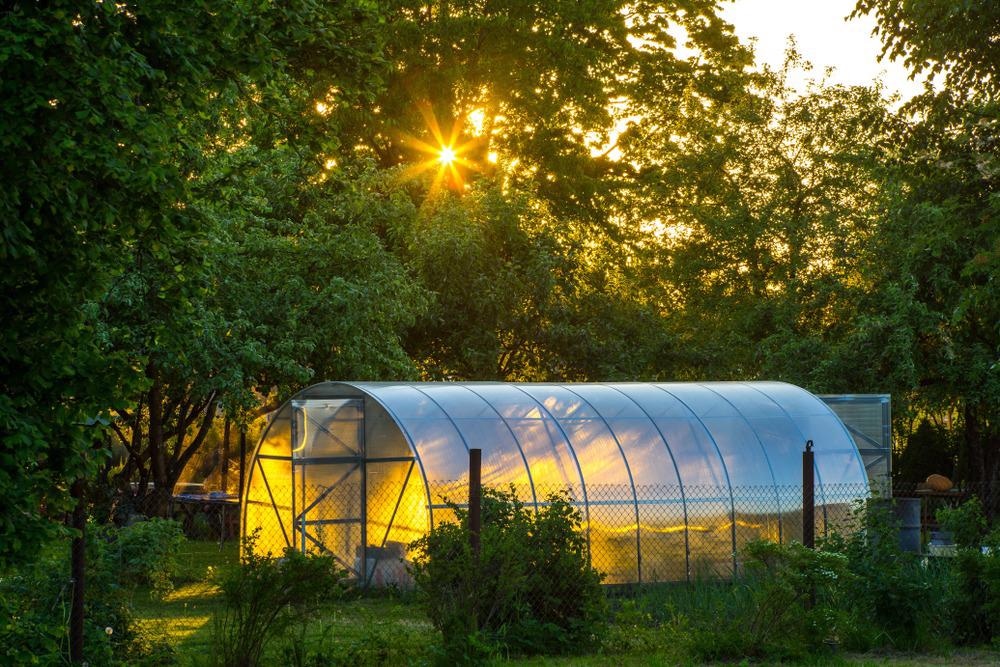
Image Credit: Aleks Kend/Shutterstock.com
What is a Transparent Solar Panel?
A transparent solar panel converts sunlight into electricity using photovoltaic (PV) glass. This process generates clean, renewable energy and does not contribute to the emission of greenhouse gases.
Transparent solar power panels can easily be installed in workplaces and houses, allowing the technology to transform almost every structure on the planet into a solar generator.
How Do Transparent Solar Panels Work?
Solar cells embedded in a panel must absorb solar radiation to generate energy.
Transparent solar panels only absorb a portion of the sunlight invisible to the naked eye while allowing the normal visible light to pass through.
Solar concentrators are installed to absorb specific invisible ultraviolet (UV) and infrared (IR) wavelengths and then convert them into a new wavelength. This new wavelength is then steered to PV cells, where it is converted into electricity.
How are Transparent Solar Panels Used in Greenhouses?
Due to the growing population and extreme weather, future farmers may be forced to rely on greenhouses to increase crop production. Greenhouses increase food production per acre by up to 100% compared to open-field farming. However, they demand enormous amounts of electricity to maintain their temperature.
Solar energy is one way to generate cost-effective electricity for a greenhouse. However, solar panels are logically placed on the roofs of buildings for maximum energy production. But for a greenhouse, the roof is a strategically important place. It has to provide sufficient bandwidth for the passage of sunlight for the growth of plants and the accumulation of a suitable temperature.
On the other hand, transparent solar panels allow passage of most of the light that plants need, absorbing only a small part, which is converted into electricity. They are also an effective insulator, helping to maintain a constant temperature in the greenhouse.
Scientists believe that transparent photovoltaic cells will have little effect on plant growth, making them ideal for use in greenhouses. They also present an opportunity to diversify technologies for producing sustainable energy.
Greenhouses can become energy-neutral, producing energy equal to energy costs by blocking a limited amount of sunlight. However, if farmers want to generate more energy, they can further reduce the amount of light transmitted.
Transparent solar panels limit the use of primary energy sources (petroleum, natural gas) for heating and cooling the greenhouse, reducing greenhouses' energy footprint. As the energy supply is renewable, it produces carbon-free electricity without affecting crop productivity.
Recent Developments in Transparent Solar Panels for Greenhouses
Researchers at North Carolina State University (NCSU) installed semi-transparent solar panels in greenhouses. They discovered that it could generate electricity without harming the health or growth of the plants. They conducted a series of tests on various red leaf lettuce under various glass types and light wavelengths to see if the transparent solar cells harmed the plants.
The results revealed that the lettuce produced with transparent solar cells did not differ significantly in any critical measurement, such as size, weight, antioxidants, or CO2 absorption. The solar panels also assisted with temperature control in the greenhouse.
Industrial Availability
PanePower Solar Window
Brite Hellas, a solar energy company in Greece, has developed the PanePower Solar Window (SW). PanePowerSW is a unique transparent (up to 70%) glass for solar panels that generate clean energy using photovoltaic technology. More importantly, it allows light to shine through the windows of greenhouses and commercial buildings.
PanePowerSW contributes to energy savings in buildings of up to 30% and allows greenhouses to grow crops while reducing energy costs, which are estimated at 25% of total operating costs.
Insolight THEIA Solar Module
Insolight, a SWISS company, has developed a next-generation PV panel based on the Translucency & High Efficiency in Agrivoltaics (THEIA) solar module.
The company claims that this photovoltaic module has an efficiency of up to 20%, making it the most efficient on the market.
The module uses hexagonal lenses, which converge sunlight into a single beam.
The transparent panels feature two modes: E-Mode, which generates electricity while transmitting diffuse light, and MLT-Mode, which is 78% transparent but does not generate electricity.
The Future of Transparent Solar Panels
The efficiency of fully transparent solar panels is under 1%, although the technology has the potential to reach 10%. In contrast, conventional solar panels can achieve an efficiency of up to 22% or more.
Transparent solar panels are not yet powerful enough, however, this will inevitably change in the near future. In comparison, nearly a decade ago, solar energy was not considered competitive, and now it is considered one of the cheapest ways to generate electricity.
Transparent solar panels are a promising invention that will allow the widespread use of solar energy for electric power generation. Unlike ordinary panels, they do not clutter up space and do not create unnecessary shadows.
Future greenhouses can be made energy-neutral and self-sufficient solar power plants by installing transparent solar panels capable of using energy from light not used for photosynthesis.